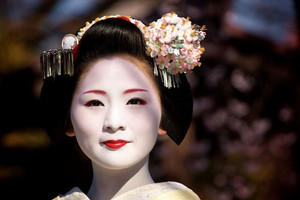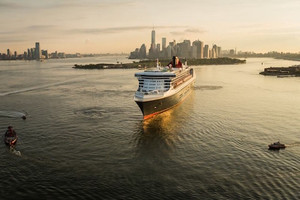
Whether you’re cruising, or visiting by land, Croatia has undoubtedly become a must-see destination for many Australians. The reasons why? HBO’s epic fantasy series, Game of Thrones, may have helped to put Croatia on the map, but there are plenty of other draw cards as visitors quickly discover. It’s one of Europe’s sunniest destinations, with up to 12 hours of sunshine a day in May and June, and 13 in July and August, and it is also good value for money, even though the country has been a member of the EU since 2013. Croatia is also packed with attractions, from spectacular beaches to national parks and gorgeous Roman ruins, so if it is on your list to visit anytime soon, here’s our top five places to put on your itinerary - and why.
Dubrovnik
Often dubbed the “Pearl of the Adriatic”, Dubrovnik is simply one of those destinations which possess a certain “wow” factor. This fascinating city, which is encased by medieval walls, and perched high above the Adriatic on stone cliffs, is protected by UNESCO, and has a colourful history spanning at least 14 centuries. Top of the list of things to see and do here is an exploration of the Old City on foot, its pedestrian-only cobbled streets teeming with energy, and packed with outdoor cafes, bars and restaurants, offering a glimpse of local daily life as well as some of the best photo opportunities. From holy sites to palaces and landmarks, within the walls there are many fascinating sights to see.
Hot Tip: Dubrovnik gets very crowded during the peak summer months, with visitors including daily cruise ship passengers, so if you can travel outside of July and August in particular, do so. From the city, however, there’s also plenty of opportunity to escape for day trips to nearby islands including Lokrum which is very close, the Elafati Islands or Mljet.
Zagreb
It’s Croatia’s capital and often compared to the ever popular Prague, located in the northwest of the country on the southern slopes of Medvednica Mountain and the Sava River. While it may not have the glittering beaches of the Adriatic, Zagreb is an ideal destination to explore for a few days with an impressive lineup of sights restaurants and nightlife on offer. The city is divided into three parts. They include the Gornji grad, or Upper Town, which contains the Presidential Palace, St Mark’s Church, and museums and galleries set in cobbled streets lit by gas lamps, the 19th century Donji grad, or Lower Town, which has shops, restaurants, cafes, theatres and parks, and Novi Zagreb, or “new Zagreb’, which isn’t a tourist hotspot.
Hot Tip: Zagreb is well connected to the rest of Croatia by train, bus and air, so it can be a great place to start exploring the country. It’s also a city of museums, with more per square metre than any other city in the world.
Hvar
One of Croatia’s more luxurious islands, as well as one of the country’s sunniest spots, so you’ll often hear about celebrities and the well-heeled who holiday there each year. But don’t let that put you off as a visit to Hvar is worth the effort. Hvar Town is the main hub of the island, and where you’ll find most of the glamorous resorts and elegant restaurants, along with a few sights, but if you want to get away from the crowds head for Stari Grad or Jelsa in the north which are much more low key. Hvar is also famous for spectacular lavender fields, and its interior is dotted with ancient hamlets, craggy peaks and vineyards, while the southern end of the island is blessed with isolated coves.
Hot Tip: Hvar Town harbour is the place to start a night out in the early evening as it is great for people and yacht-watching. Although there are several beaches close to Hvar Town, if you fancy a beach day head to the nearby small group of islands, the Pakleni Islands.
Brac
Pronounced “bratch”, central Dalmatia’s longest and most elevated island is 48 kilometres long and 14 kilometres wide. It’s also the home of one of Croatia’s most famous beaches, Zlatni Rat beach, a white shingle beach next to pine trees which changes shape with the tides and winds. Brac is located close to Split, which makes it a very popular place during summer. Its three main resorts are Bol, Supetar and Milna, all of which offer beaches and resort life, however, the island is far less touristy than Hvar, although there isn’t much in the way of sightseeing or culture.
Hot Top: If you get bored with beach life, head to the island’s highest point, Vidova Gora, which towers 778 metres high and offers lovely views. The olive oil in Brac is also unique; the olives are of a rare variety called buhavica, there's over a half-million trees on the island.
Korcula Town
It’s on the island of Korcula, and often described as a petite version of Dubrovnik, complete with an Old Town and plenty of sights, monuments and galleries to keep visitors occupied. The medieval walled city juts into Peljesac Channel, with narrow streets stretching off the main street like fishbones from a spine, and the architecture is mainly influenced by Venetian Renaissance. The heart of the Old town is dominated by St Mark’s Cathedral, which was built in a Gothic-Renaissance style, and there are a number of beaches close by the town if you want to escape the heat.
Hot Tip: Korcula Town is connected to the mainland by ferry, and in July and August there is also a catamaran connecting Mljet and Dubrovnik. Borak, located in the eastern side of Korcula Town, right next to Punta Jurana, has a pedestrian-only promenade with many cafes and restaurants.
- By:
- Ben Hall











